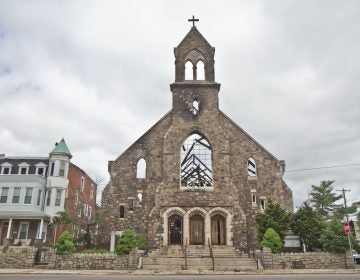Changing Philly neighborhood rallies behind family after racist threat
The formerly industrial neighborhood of Tacony has undergone a significant change in its demographics over the past few decades, which has brought racial tension and unease.
-
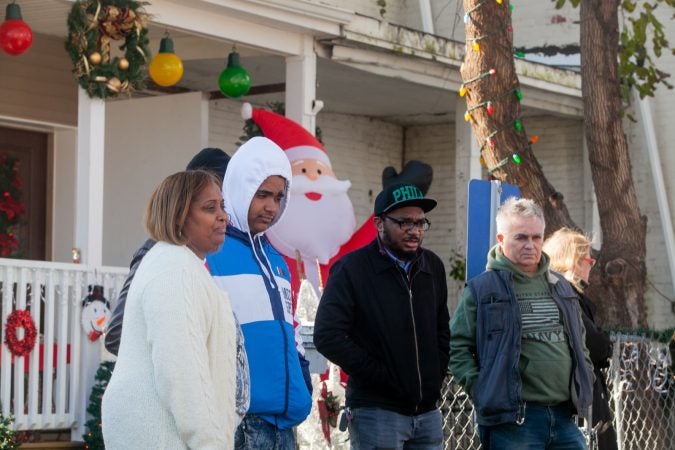
The Mella family, left, stand near their home during a gathering of Tacony residents and neighbors who came out on Saturday to show support for the family who received a threatening and racist letter earlier this month. (Brad Larrison for WHYY)
-
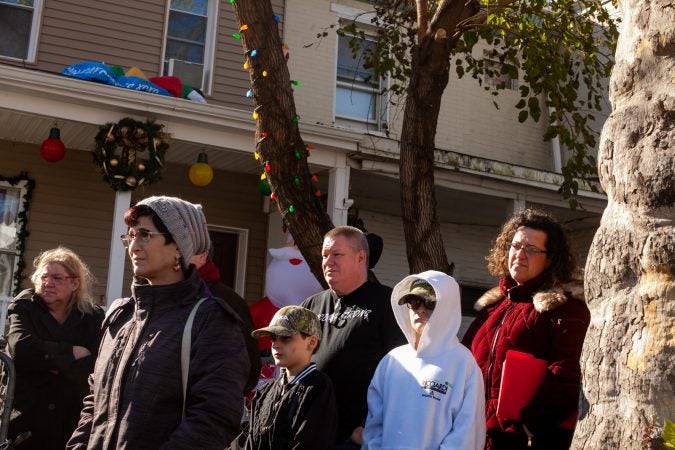
Sixteen Tacony residents and neighbors came out on Saturday to show support for the Mella family after they received a threatening and racist letter earlier this month. (Brad Larrison for WHYY)
-
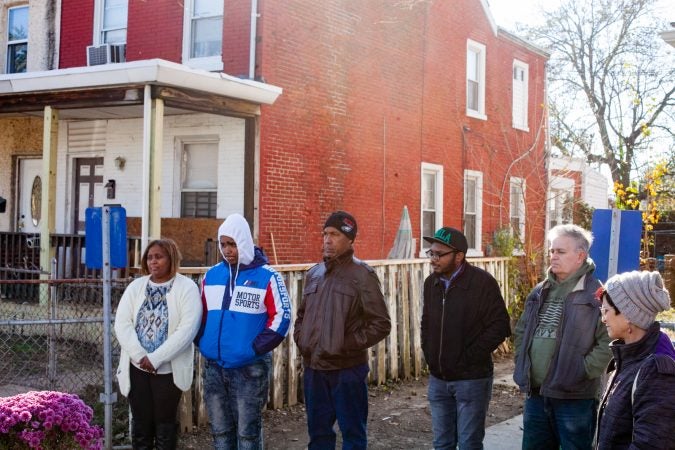
The Mella family, left, stand near their home during a gathering of Tacony residents and neighbors who came out on Saturday to show support for the family who received a threatening and racist letter earlier this month. (Brad Larrison for WHYY)
-

Pete Smith, President of the Tacony Civic Association, spoke at a gathering for the Mella family who recently received a racist and threatening letter after moving into the neighborhood. (Brad Larrison for WHYY)
-
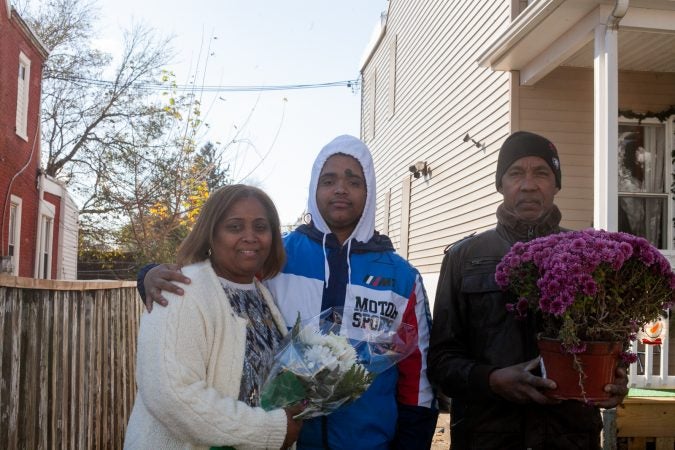
The Mella family outside of their home in the Tacony section of Philadelphia. (Brad Larrison for WHYY)
-
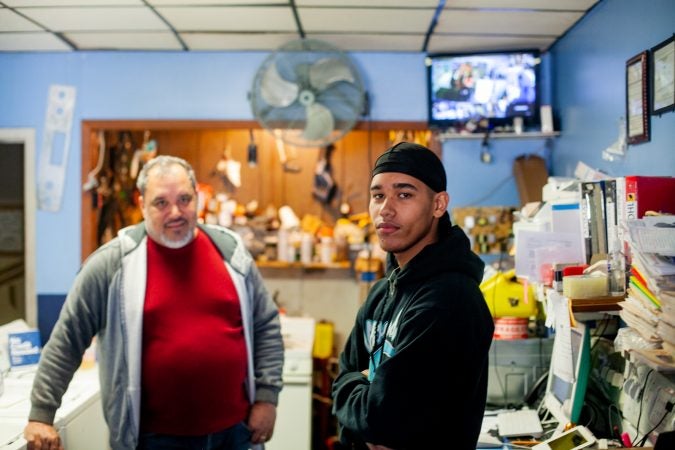
Rolando Rivera, 15, and his father, Javier, inside the Pronto appliance shop, their family business, on Torresdale Avenue in the Tacony section of Philadelphia. (Brad Larrison for WHYY)
One week after news quickly spread of a racist, threatening letter she’d received, Connie Mella stood outside her home in the Tacony section of Northeast Philadelphia, holding a bouquet of white flowers as 16 of her neighbors came together to denounce the hateful words.
The letter’s anonymous author threatened to “fire bomb” Mella’s home if she played loud music or made too much noise, according to news reports, and called her “sub human.”
Mella, who was born in the Dominican Republic, has since received an outpouring of support from her neighbors, which culminated in the small demonstration in front of her home Saturday afternoon to formally welcome her family.
“In Tacony, we’re all one,” said Peter Smith, president of the Tacony Civic Association. “Regardless of race, color, political, or sexual orientation, we are a neighborhood. We stick together and when something like this happens, we come together as a family.”
For much of the 20th century, Tacony was predominantly white, but the formerly industrial neighborhood has undergone a significant change in its demographics over the past few decades.
According the according to Pew Charitable Trusts, between 1990 and 2010, Tacony’s white population decreased by more than a third, while the Hispanic population increased more than 14 times. The number of Asian residents in Tacony more than tripled, and the black population increased by 16 percent.
The latest census data show the community is nearly split between whites, and other minority groups — mostly Latinos and Hispanics, blacks, and Asians.
Residents acknowledge that the increasing diversity has brought racial tension and unease, but such is the case in many neighborhoods in Philadelphia and across the country. But Tacony is a neighborhood of unity, insisted those who gathered outside Mella’s home.
“Times have changed greatly,” said Anne Sanderson, who organized the event. “This neighborhood which was most predominantly white is now diverse and it has numerous nationalities and religions and sexual orientations. We don’t ever have an issue.”
A few blocks away from Mella’s home, 15-year-old Rolando Rivera said “every once in a while there’s fights that break out,” but the area is “usually calm.”
Rivera is a student at Abraham Lincoln High School in the neighboring Mayfair section, and has lived in Tacony most of his life. He’s both Puerto Rican and Dominican, and his father, Javier owns an appliance store on Torresdale Avenue.
Rivera said the fire bomb threat is surprising to him.
“There’s sometimes racism going on around here, stuff like that,” said Rivera. “But at the end of the day, we’re still a community. We still all work with each other.”
In June 2014, the neighborhood made headlines when a member of the Tacony Town Watch was exposed as being a leader of a group affiliated with the Ku Klux Klan. Members of the Klan held a rally at the Tacony Free Library to protest his ouster, and video of the rally shows they were greatly outnumbered and rebuked by community members.
On Saturday, standing among the 16 people looking to put Mella and her family at ease, City Councilman Bobby Henon said such acts of hate must be dealt with swiftly to deter such things from happening again.
“In today’s environment,” he said. “We’re not taking any chances.”
As the police investigate the incident, Henon said the matter was also reported to the city’s Human Relations Commission.
After the small demonstration, Mella said she is still uneasy, and worries about possible retaliation, but she isn’t going anywhere.
“It’s my house,” Mella said in Spanish. “I like it. I am staying here.”
—
Correction: This story has been updated to reflect that between 1990 and 2010 Tacony’s Hispanic population increased more than 14 times and the number of Asian residents more than tripled.
WHYY is your source for fact-based, in-depth journalism and information. As a nonprofit organization, we rely on financial support from readers like you. Please give today.




